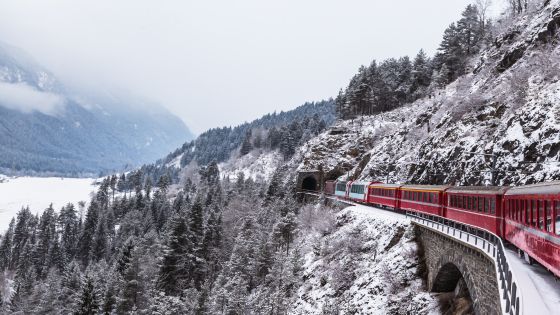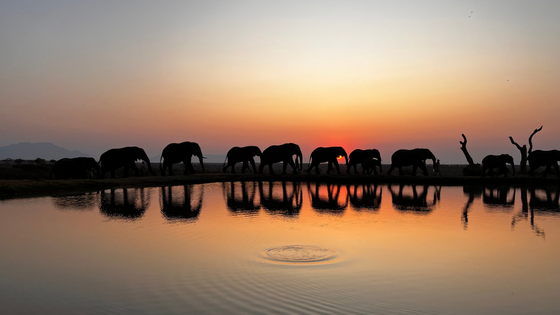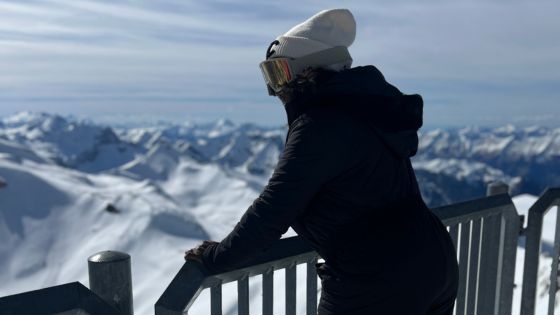Explore Black History Month in Birmingham, Alabama
Looking for Black History Month ideas to share with your teen? I recently had the opportunity to work with the Birmingham Tourism Board to explore the history of Civil Rights in Alabama.
There are so many things to do for Black History month in Alamba that you can’t possibly see it all in one trip so be prepared for a return trip to Alabama.
My daughter is a history buff so I had to show her just how amazing black people really are! Black History Month is an annual celebration of achievements by African Americans and a time for recognizing the central role of blacks in U.S. history.
The event grew out of “Negro History Week,” the brainchild of noted historian Carter G. Woodson and other prominent African Americans.
Since 1976, every U.S. president has officially designated the month of February as Black History Month. Other countries around the world, including Canada and the United Kingdom, also devote a month to celebrating black history.
We all remember the activities and events that occurred while we were in school, but how do we celebrate Black History as adults and how do we as adults help our children to understand the importance of Black History Month?
Birmingham celebrates our nation’s Black History year-round, but February especially is full of fun events, live music, and reverent observances honoring the city’s African-American community that ignited a nationwide movement.
Whether you attend Birmingham’s Annual Black History Month Parade or visit one of the city’s many interactive time capsules including the King Center or National Center for Civil & Human Rights, it’s not only an educational experience – but an inspiring journey to see where it all began.
Check out these things to do for Black History month in Birmingham including local Black History sites, events, tours, and charitable opportunities as we celebrate our nation’s greatest milestones in human history.
Black History Month Ideas For Birmingham, Alabama
The history and legacy of Martin Luther King Jr., Rosa Parks, Medgar Evers, John Lewis, and countless other unknown African-Americans are commemorated at hundreds of museums, churches, courthouses in now what makes up the historic Civil Rights Trail Sights In Alabama.
Whether you’re just passing through or looking to experience Birmingham during a prolonged vacation, here are a few historical sites you won’t want to miss for Black History Month:
The links in this post may be affiliate links. That means that if you click them and make a purchase, this site makes a commission. It will have no impact on the price you pay or the experience of your purchase.
The Civil Rights Trail has locations all throughout Alabama, Tennessee, and Georgia that include discussions about the following:
- Freedom Riders
- Selma, Alabama marches
- Edmund Pettus Bridge
- 6th Street Baptist Church in Birmingham
The Historical Sites in Birmingham, AL focuses on the movement, encourage tourism, and open dialogue about where we are now as a country.
As I began to ask my readers questions about the Civil Rights Movement, Jim Crow Laws, and Black History I began to realize how uncomfortable the subject of race and racism makes the majority of white people feel. Ci
1. Sixteenth Street Baptist Church
This church has a sad history that’s deeply rooted in the historical Civil Rights movement. On September 15, 1963, the Ku Klux Klan bombed the Sixteenth Street Baptist Church, killing four girls.
It was a turning point for the nation as it brought everyone together, ensuring that the Civil Rights Act would be passed the following year. Despite being bombed, the church was reopened that same year with the help of global donations that came pouring in.
2. Birmingham Civil Rights Institute
You can’t escape the city’s historical prominence in the Civil Rights movement, which is why a visit to this museum is worthwhile.
BCRI’s mission is “to enlighten each generation about civil and human rights by exploring our common past and working together in the present to build a better future.”
The self-guided, multimedia experience includes state-of-the-art permanent and temporary exhibitions, and visitors will enjoy a short film that presents the history of Birmingham and its place in this important era of history.
3. Sadler Plantation House
One of the surviving homes from the early 1800s, the Sadler Plantation House is a testament to the beauty of Deep South plantation architecture.
The home was originally a single pen log cabin, but it was expanded in 1835. The house was even on General James H. Wilson’s command route during his devastating raid through Georgia and Alabama, although it managed to survive.
The home is located north of Tannehill Ironworks Historical State Park, and its grounds are open to the public.
4. Kelly Ingram Park
Just across the street, Kelly Ingram Park was the site of organized protests and boycotts, and in May 1963, was where Bull Connor turned fire hoses and dogs on protestors.
Today the site honors Civil Rights leaders with statues and a new cell-phone accessible audio tour free to the public.
On Saturday, a new statue will be unveiled memorializing the four girls killed at the 16th Street Baptist Church, 50 years ago this week.
5. Bethel Baptist Church
Located in the Collegeville neighborhood (you will need a car to get here from the Civil Rights District), Bethel was pastored by Civil Rights leader Reverend Fred Shuttlesworth and headquarters for the Alabama Christian movement.
Bombed three times, it was never closed. Today the red brick building has been restored to the way it looked during this period and is open to visitors.
6. Dynamite Hill
Birmingham’s East Thomas community got its moniker because of the number of homes that were bombed in the 1960s.
Among those affected: Civil Rights attorney Arthur Shores and the congregation of Our Lady Queen of The Universe Catholic Church. Markers guide visitors, explaining the significance of the neighborhood.
Are We in the Midst of a New Civil Rights Era?
If we want to heal the racial divide we must be willing to have those hard conversations or we will repeat an unfortunate part of history and I personally have absolutely no desire to go backward.
Let’s be real I live a very privileged life thanks to the countless people who fought that battle for me. Ci
Since the election of President Donald Trump, news outlets and social media accounts have swelled with reports of swastikas at schools, racist taunts, and other hate-fueled attacks and acts of intimidation.
We can’t Repeat The Mistakes of The Past
Are we repeating the mistakes of 1968? It seems as though we are because just as in 1968 the government is turning a blind eye to the rise of white power groups which is why the Alabama Civil Rights Trail is more important now than ever.
Just as in 1968 our country would rather open more prison systems, militarize the police, criminalize small offenses and worry about football players kneeling during the National Anthem rather than bringing us together.
Today, many of those battlegrounds have evolved into state-of-the-art museums that explain the stories within the movement.
The Civil Rights Sights In Alabama allows you to take the same steps as countless known and unknown Civil Rights leaders took and to meet some of the very people who were on the front lines of the movement.
Additional Things To Do For Black History Month
Selma, Alabama
Over Six hundred marchers assembled in Selma on Sunday, March 7, 1965, led by John Lewis. Lewis and other protestors crossed the Edmund Pettus Bridge over the Alabama River en route to Montgomery.
Just short of the bridge, the protestors were blocked by the Alabama State troopers and local police who ordered them to turn around.
When the protesters refused, the Alabama State troopers and local police shot tear gas into the crowd, beat the protesters with billy clubs, and hospitalizing over fifty people.
“Bloody Sunday” was televised around the world. Martin Luther King called for civil rights supporters to come to Selma to participate in a second march.
King led the second protest on March 9 but turned it around at the same bridge.
In Selma, you can also walk across the Edmund Pettus Bridge where marchers were attacked in 1965 and then step inside the National Voting Rights Museum to learn about the movement’s “foot soldiers.” C
On March 21, the final march began with federal protection, and on August 6, 1965, the federal Voting Rights Act was passed!

Civil Rights Trail in Montgomery, Alabama
The Montgomery Bus Boycott was pivotal during the Civil-Rights Movement. African Americans refused to ride city buses in Montgomery, Alabama, to protest segregated seating.
The boycott took place from December 5, 1955, to December 20, 1956, and was the first large-scale protest against segregation.
Four days before the boycott began, Rosa Parks, an African-American woman, was arrested and fined for refusing to give up her bus seat to a white man.
The U.S. Supreme Court ordered Montgomery to integrate its bus system, and a young pastor named Martin Luther King Jr. emerged as the leader of the Civil Rights Movement. C
Civil Rights Memorial Center in Montgomery contains exhibits of the events that occurred there. The exhibit explains how 40 activists died in the South between 1955 and 1968 when Dr. Martin Luther King Jr. was assassinated. T
Montgomery is also home to the Rosa Parks Museum, the Dexter Avenue King Memorial Baptist Church where King preached, and the Dexter Parsonage Museum.
Civil Rights Trail in Birmingham, Alabama
Birmingham also played a pivotal role in the Civil Rights movement. In 1963, images of police dogs attacking protesters and children while being sprayed with high-pressure water hoses appeared on television sets across the world.
The Sixteenth Street Baptist Church where four young girls were killed by a racist bomb was the turning point in Birmingham’s troubled history.
These dramatic scenes from Birmingham caused a National uproar not only from other countries but also President John F. Kennedy, which elevated civil rights from a Southern issue to a pressing national issue.
The Confrontation
The confrontation between protesters and police was a product of the direct action campaign known as Project C. Project C—for a confrontation which challenged unfair laws that were designed to limit the freedoms of African Americans and keep the playing field unleveled.
Leaders from the Southern Christian Leadership Conference (SCLC) along with Reverend Fred Shuttlesworth of the Alabama Christian Movement for Human Rights (ACMHR) took up residence at the A.G. Gaston Motel in April through May of 1963 to direct Project C.
Eventually, public outrage over the events in Birmingham produced enough political pressure to pass the Civil Rights Act of 1964.
Civil Rights Trail in Tuskegee, Alabama
When most people think of the Civil Rights Movement in the U.S., they think of Birmingham, Selma, and Montgomery but the movement did not start then, and it was not only confined to the streets and diners in the South.
One of the earliest successes in the Civil Rights Movement occurred in the 1940s in the U.S. military, thanks to the Tuskegee Airmen.
The 477th Bombardment Group faced many challenges as African American men fighting for the very country that treated them like second-hand citizens.
One of their early commanders made life very difficult when the pilots only wanted to be treated as well as their white counterparts, which included having access to an officer’s club on their training base in Michigan.
Their commander would not allow them to enter because he felt blacks were inferior and segregation should not just be for civilians but also for those who served in the military.
The U.S. Air Force eventually became a separate entity from the Army, but many white servicemen were extremely under-qualified however, they could not hire any experienced black airmen because of segregation policies.
This eventually led President Truman to sign Executive Order 9981 in 1948, which called for equal treatment policies and effectively ended segregation in the military.
This was one of the earliest steps to ending segregation across the country; it would not have been possible without the hard work of the Tuskegee Airmen.
America Still Has a Big Race Problem
While in Selma we visited one of the most beautiful cemeteries and to my surprise, it was maintained by the Daughters of the Confederacy.
Who are the Daughters of the Confederacy? They are an organization dedicated to honoring their Confederate ancestors and preserving what they feel is the truthful history of the War Between the States. In other words, they are the KKK.
Many have argued that the preservation of Confederate monuments and cemeteries are necessary in order to remember.
In reality, most Confederate monuments are not about remembering history, but instead, romanticize history with myth and memories about the honorable Southern, the benevolent slave owner, and particularly honorable myths about Robert E. Lee.
Robert E. Lee was no hero!
Is they mad or is they upset? (Ebonics if you didn’t know)
I know their ancestors were turning over in their graves as I walked around over their tombstones, taking selfies, and even just being a black woman on this press trip.
Conclusion of Black History Month Ideas
We need a new conversation about race – about what it means when nearly every white person in America carries around an implicit racial bias that subconsciously prefers white people over black people in social, professional, and educational settings. It’s black and white.
It’s that stark. And we need to start that conversation as soon as possible.
I pray my daughter is not having this conversation with her children 20 years from now. We have got to do better.
As you are completing this list of things to do for Black History month in Birmingham, talk to your friends about your experience!
You could even invite them to go along with you the next time you go on one of these adventures.
In a time where people aren’t talking, or if they are talking at all its about the madness going on in politics, Black History Month is a wonderful opportunity to connect on a much deeper level and show appreciation for the wonderful things that Black people have done!
Ready to plan your trip, grab my FREE Vacation Planner to help you plan your trip in the time it takes to watch your favorite TV show!
If you would like to donate to Passports and Grub click here!

ADDITIONAL ARTICLES FOR COUPLES
Things to do in Memphis for Black History Month
Slave Haven Underground Museum
Things to do in Memphis with Kids
Why do you believe we are still discussing race in America and you visited Alabama to learn about the role this state played in Civil Rights Movement? I would love to hear your thoughts so leave me a comment on Facebook, Twitter, or Instagram.
 ARE YOU ALSO ON PINTEREST?
ARE YOU ALSO ON PINTEREST?
Why not save this post to your Pinterest board for later? I am also on Pinterest so feel free to follow Passports and Grub boards and get the latest pin directly.









I love that you pointed out monuments are for romanticizing history and not remembering it. I feel like so many people miss that point when the confederate flag issue comes up!
February is coming up and what better time to go visit than Black History Month. This isn’t too far from Nashville so I can make it a weekend. So much rich emotional powerful history in that museum. Thanks for being our tour guide. If you haven’t check out The Underground Railroad Museum in Cincinnati.
Agree! It’s time we re-visit the past but don’t stay there so that we can have the needed conversation in our future.
This is an awesome and interesting post! Thanks for highlighting Alabama and its rich history in the civil rights movement.
My grandmother was born and raised in Alabama but I think I’ve only been there a handful of times and can’t remember much about it. I will definitely have to check this out. I think it’s so important to visit places like these to really learn more about our history instead of having it spoon fed to us.
Folks are quick to say “Why black folks still talking about it. It happened so long ago.” In actuality, it hasn’t been that long. My mother is 63 and she didn’t attend a segregated school until her senior year of High School in 1973.
It is much easier to own your ish then pretend like I never happened. Oprah did a MasterClass with John Lewis and a Civil Rights Special, both were very well done.
We are often in Alabama visiting family but not in Montgomery I need to take this trip and teach my children all about our history! This is an amazing post!
When I think about race relations in America, I’m disappointed that even with smart technology, we have not become smarter nor more compassionate for others. I disappointed and not worried about it. As a parent my goal is to try and teach my daughters are to be whole, confident women during these turbulent times.
The times we are living in makes me feel like this is indeed the new civil rights era. I will be taking my kids through Alabama for this important lesson this summer.
It annoys me to no end for people to say that racism will go away if we stop talking about it. Omg…the ignorance. Thank you for this post because it’s necessary that we keep talking, keep progressing, and teach future generations (just as you are doing with your daughter).
My daughter came home the other day and mentioned how she learned that at one point blacks and whites weren’t supposed to drink from the same fountain, so this would be cool to take her to so she can really SEE it for herself. Although it is really hard to take in.
I loved walking through civil rights history with you. Great post. I agree that we need to discuss race, but with so many people with their blinders on with racism right in front of them, I think we have a LONG way to go.
I didn’t know this trail existed- so I love that you shared and I need to check it out. But for your question, it’s so crazy that we’re still discussing race in America, but we need to keep it up. We’ve made so much progress, but we’re not there yet.
It’s crazy that is 2018 and I am having to discuss with my daughter why our neighbor doesnt want her playing with their daughter. I never thought I would see this kind of behavior in my lifetime. I can only hope it will get better
Loved this post!